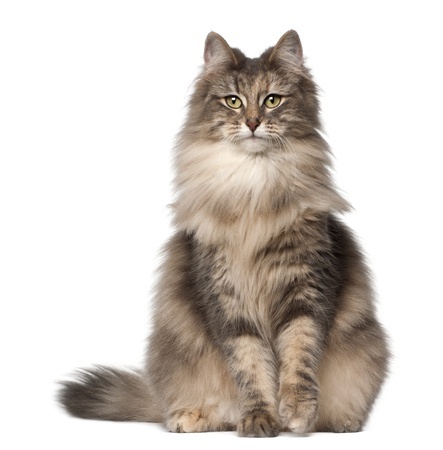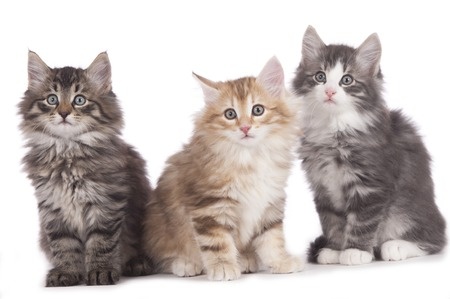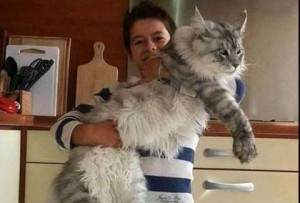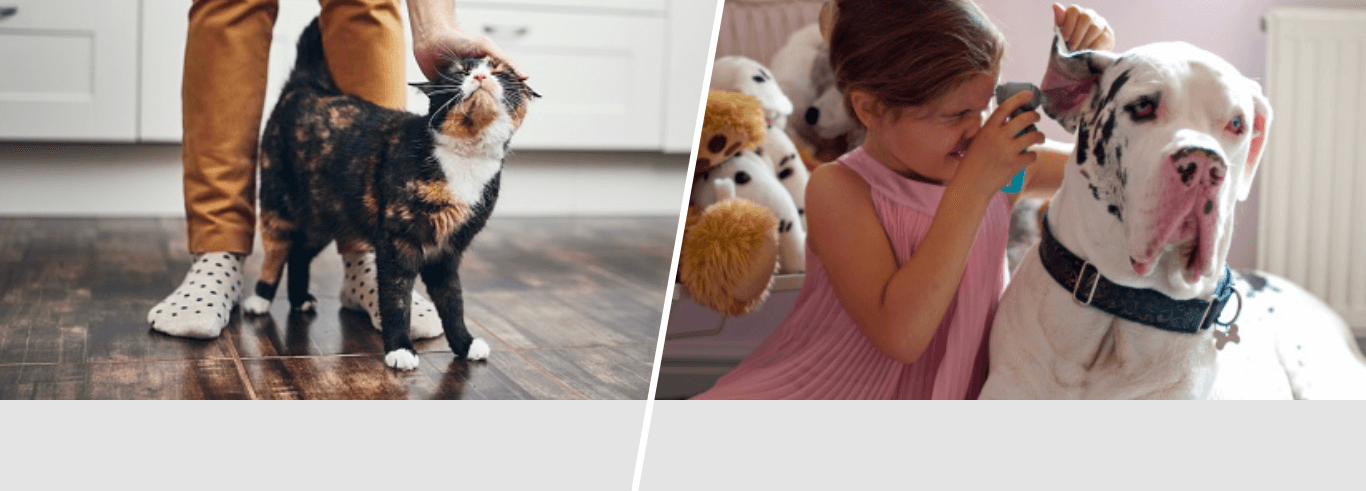Breed Review: Norwegian Forest Cats & Kittens
Norwegian Forest Cats are large, sturdy animals with a luxuriously thick coat. As the name suggests, Norwegian Forest Cats originated in Norway and has become a popular pet across Europe and the United States. The Norwegian cat breed is also often referred to as “Wegie”, for short.
The Norwegian Forest Cat’s Origin
The exact origins of the breed are not clear, largely because of its age. Native to Norway, the breed dates back hundreds, if not thousands of years.
Norwegian Forest Cats feature in Nordic legends as their mythological ancestors are known for being the chariot-bearers for the Norse goddess Freya. More recently, the Norwegian Forest Cat found homes in farms, where they would be referred to as “Skogkatt” and used to keep the local mouse population under control.
The breed was shown in Oslo, Norway, for the first time in 1938 but it was not until 1975 that the breed gained formal recognition with the European cat registry. In 1979, the first breeding pair of Norwegian Forest Cats was exported to the US and the type was awarded championship status in 1993.
Norwegian Forest Cat Size & Appearance
Norwegian Forest kittens are popular because they take up to five years to fully mature. As adults they can weigh up to 10kg (about 1st 7lb) and their thick coat only adds to their presence. The double fur varies in length, with a short collar flowing into longer hairs on the body and near the thighs. The coat appears in a large variety of colours, with and without white patches. Their coat is designed for life in Norway, so is warm and water-resistant. Overall, the Norwegian Forest Cat appearance is not dissimilar to the Maine Coon breed.
Likewise, the Norwegian cat’s features are a clue to its natural environment – the ears have long, wispy hairs to deflect ice-cold winds, while the large, heavily tufted paws are perfect for treading on snowy ground. The back legs are longer than the front, making the Norwegian Forest cat an excellent tree-climber.
Norwegian Forest Cat Personality
Their personality is friendly, calm and gentle. They are intelligent and fairly affectionate, some have described their character as “dog-like”.
The cats are generally adaptable, inquisitive and bold. The Norwegian Forest cat temperament is that they are often good with children and other animals, making them perfect family pets.
Although sociable, they don’t demand too much attention and are happy to be quite independent – they’re not always the best lap cats. Norwegian Forest cats are happy to dip their paws in water in search of food, so be aware if you have a fish tank or a pond in the garden.
While Norwegian cats love the outdoors, they are quite happy to spend quiet time indoors. Their alert and intelligent nature means they enjoy playing games, learning tricks and they thrive in a busy family environment. Like many cats, they’ll usually develop a fondness for a particular toy.
Another distinguishing Norwegian Forest Cat trait are the noises it makes, from a soft purr to bird-like chirps when he or she is excited.
Norwegian Forest Cat Grooming & Care
Although their coat is long and thick, it is not too hard to look after. Brush the fur twice a week, taking care to tease out any tangles so that you don’t hurt them. During the shedding period, it’s a good idea to increase the grooming frequency to three or four times a week to avoids knots or matting.
Bathing Norwegian Forest Cats requires a bit of extra work, largely due to the waterproof coat. The coat develops a natural oil, which can be washed away with a specially selected fur shampoo. Every cat is different, so it may take a few bathing attempts for you to work out what suits your pet best.
It’s important to make sure the coat is thoroughly rinsed after washing and it can sometimes be challenging to dry the fur, so it’s often best to let it dry naturally in a warm environment. Ideal places are in front of a fire or heater in the living room. If you prefer to use a hairdryer, take care that it’s not too hot.
Make sure to brush their teeth regularly and check their ears once a week. If their ears are dirty, clean them with a soft cloth or cotton wool ball – not a swab.
Keep the litter tray clean, to help ensure his or her coat stays fresh. Take a look at our range of cat accessories and find the perfect products to help groom and take care of your Norwegian cat.
Norwegian Forest Cat Health Issues
Norwegian Forest Cats are known as being a generally healthy breed, but there are two main known health issues that they are susceptible to. These are heart and kidney problems – but they are very rare.
The breed has also been known to suffer from hip dysplasia, a rare problem that affects the hip joints, as well as potential weight related problems such as diabetes and joint issues as they age.
How Long Do Norwegian Forest Cats Live?
Just like most domestic cat breeds, the average lifespan of a Norwegian Forest Cat is between 12 and 16 years, but can vary depending on their overall health and quality of care. Ensuring regular vet check-ups and up-to-date vaccinations can help prolong your cats life expectancy.
Recently added a Norwegian Forest Cat to the family? It’s important to help protect yourself from vet bills should your cat get injured, with Argos Pet Insurance provided by Pinnacle Insurance Ltd. Explore our Norwegian Forest Cat insurance policies today.
 Sorry, our lines are now closed
Sorry, our lines are now closed






